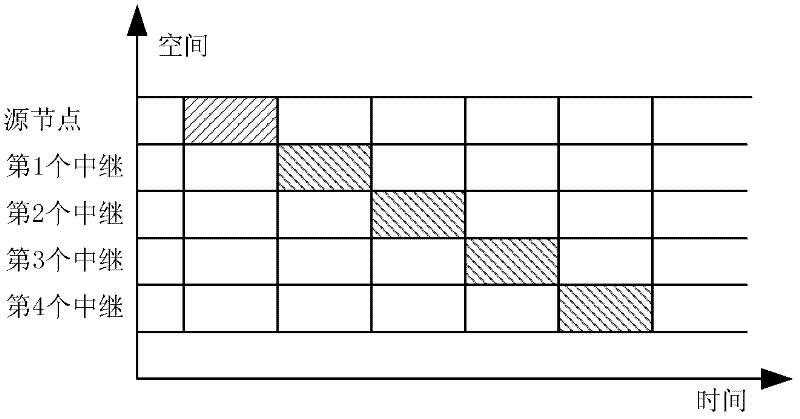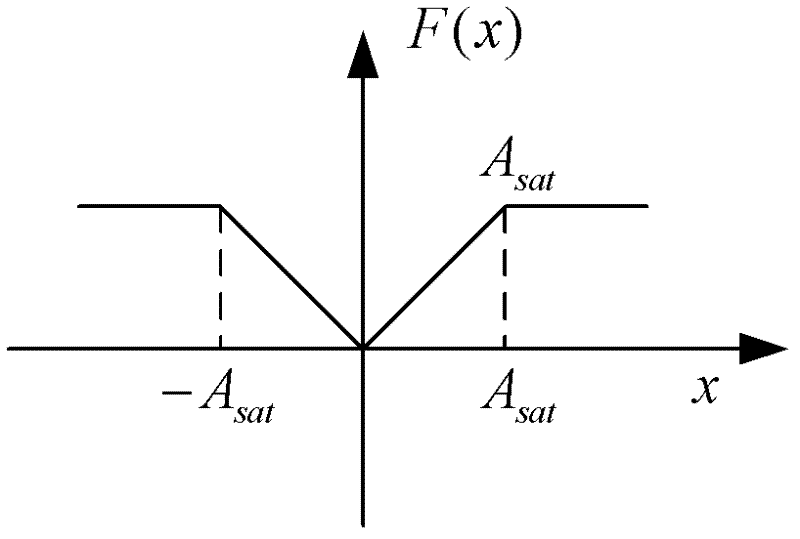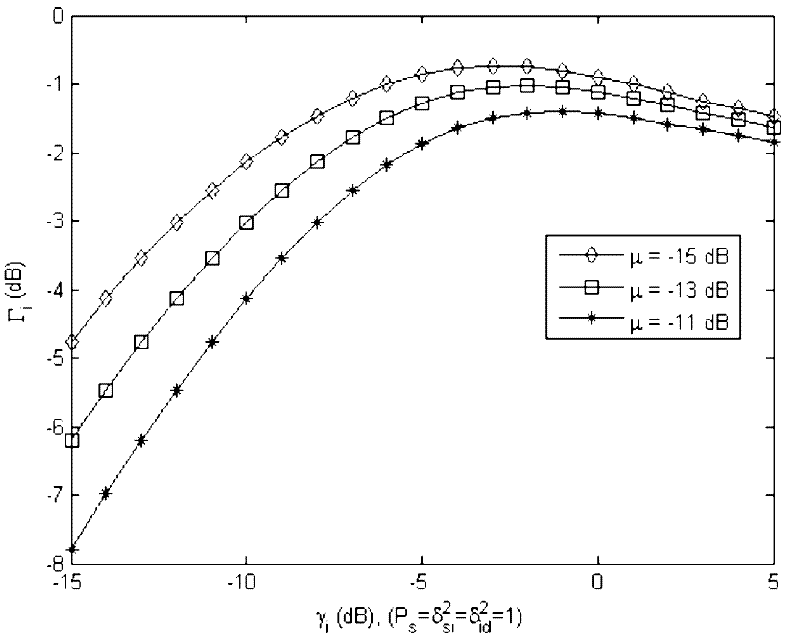Nonlinear amplification-retransmission optimal power allocation method
An optimal power, forwarding and relay technology, applied in power management, wireless communication, electrical components, etc., can solve problems such as research and discussion of optimal power allocation in non-linear relay networks
- Summary
- Abstract
- Description
- Claims
- Application Information
AI Technical Summary
Problems solved by technology
Method used
Image
Examples
Embodiment Construction
[0079] The present invention is described in further detail below in conjunction with accompanying drawing:
[0080] see Figure 1-5 , the optimal power allocation method for nonlinear amplifying-forwarding relays, according to the following steps:
[0081] 1) Consider a network of N relays. pass figure 1 Demonstrates the intermediate network signal transmission process. The signal transmission process is divided into two stages. In the first stage, the source node broadcasts the signal to all relays, and the signal received by the i-th relay is:
[0082] r i = P s f i s + n i - - - ( 14 ) ;
[0083] where P s is the transmitting power of the source node, f i is the channel coefficient from the...
PUM
 Login to View More
Login to View More Abstract
Description
Claims
Application Information
 Login to View More
Login to View More - R&D
- Intellectual Property
- Life Sciences
- Materials
- Tech Scout
- Unparalleled Data Quality
- Higher Quality Content
- 60% Fewer Hallucinations
Browse by: Latest US Patents, China's latest patents, Technical Efficacy Thesaurus, Application Domain, Technology Topic, Popular Technical Reports.
© 2025 PatSnap. All rights reserved.Legal|Privacy policy|Modern Slavery Act Transparency Statement|Sitemap|About US| Contact US: help@patsnap.com



